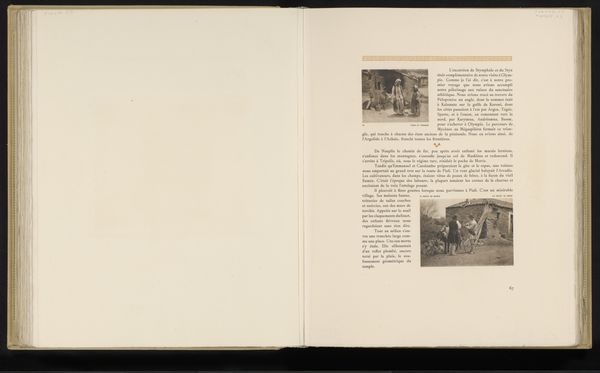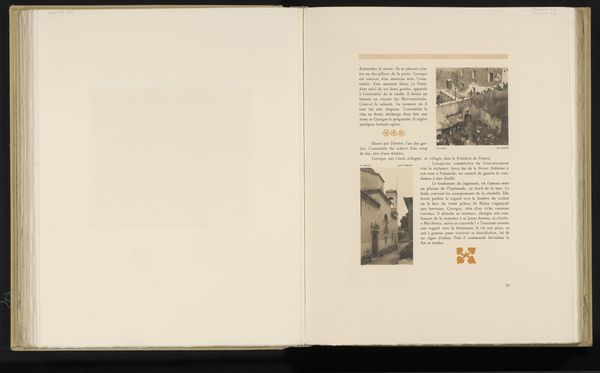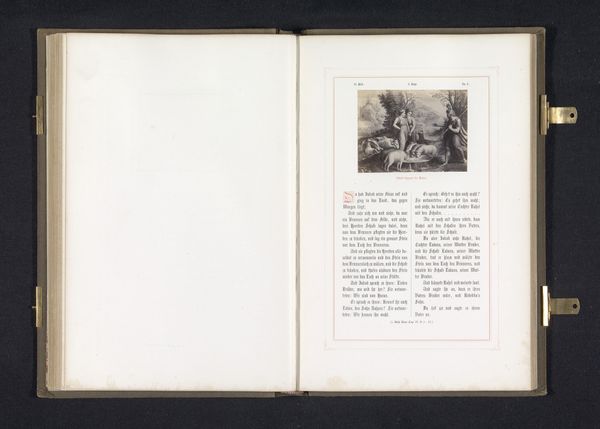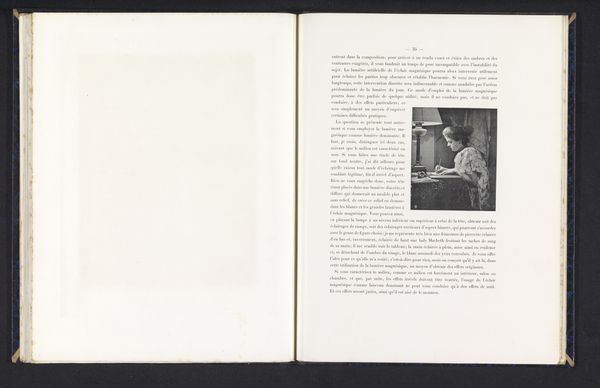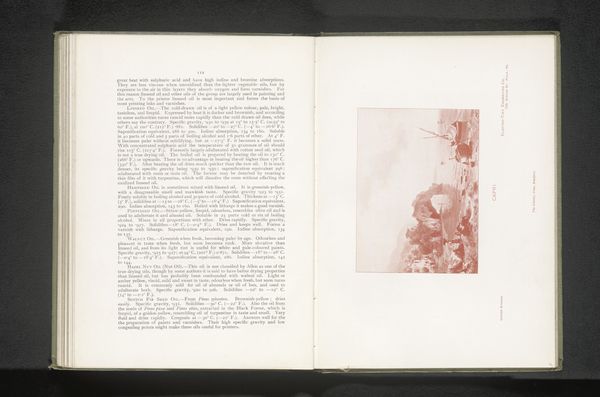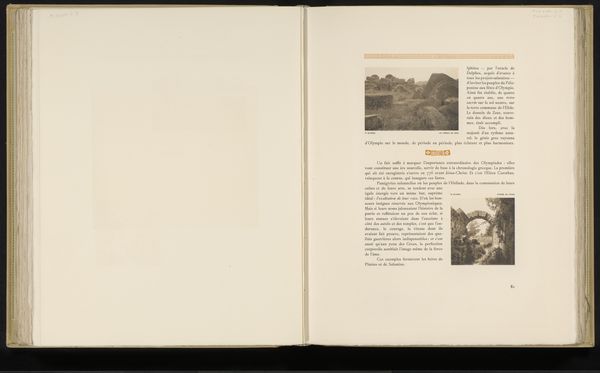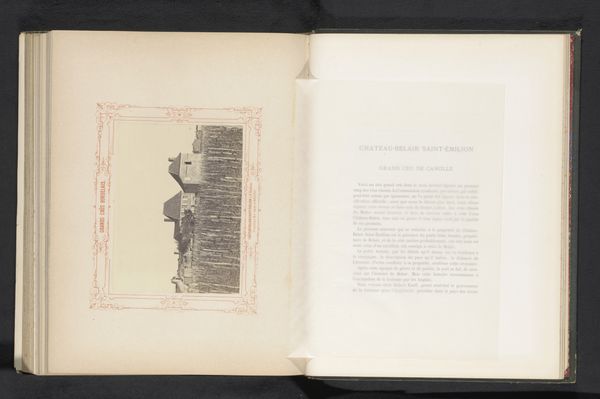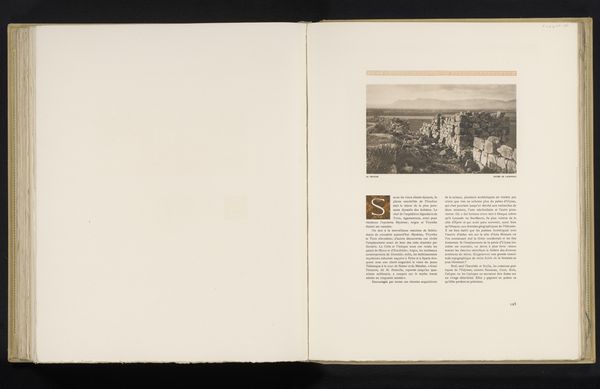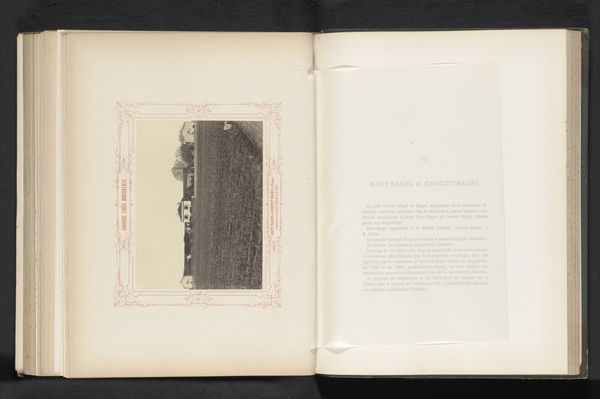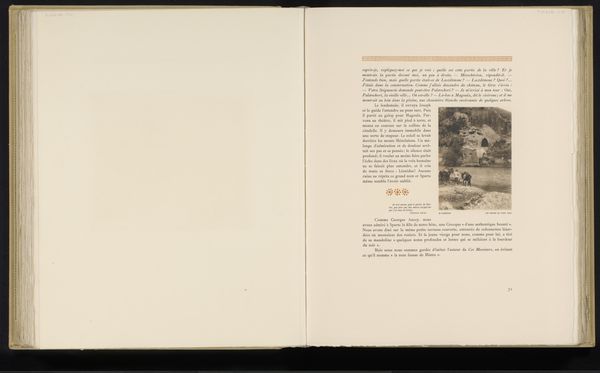
print, photography
#
sand serif
#
aged paper
#
font guideline
#
paperlike
# print
#
photography
#
geometric
#
ancient-mediterranean
#
thick font
#
publication mockup
#
script guideline
#
paper medium
#
historical font
#
publication design
Dimensions: height 170 mm, width 105 mm
Copyright: Rijks Museum: Open Domain
Editor: Here we have "Interieur van de Schatkamer van Atreus in Mycene" – or Interior of the Treasury of Atreus at Mycenae – created by Frédéric Boissonnas before 1910. It seems to be a photograph reproduced in a publication. It's fascinating how the image of such an ancient space is presented in a printed, almost mass-produced, format. What strikes you about this piece? Curator: I'm immediately drawn to the tension between the monumental subject and the chosen medium. We have this massive, ancient structure – the Treasury – reduced and contained within the pages of a book. What kind of labor went into extracting this photograph from this site? What kind of resources are needed to make this widely available as a print? The means of photographic reproduction, itself an industrial process, democratizes access but also inherently transforms the experience. The photograph acts as a commodity, circulated and consumed. Editor: So you’re focusing on the means of production and how that impacts our understanding? Curator: Precisely. Boissonnas, as a photographer, isn't simply capturing an image, but engaging in a process that transforms a unique historical site into a reproducible object. The materials matter, and the way the photographic image alters that is telling. This printed photograph, once part of an archaeological document, may reveal a history of access and knowledge. What’s present alongside the photograph in the document? Editor: Well, it looks like descriptive text printed in what seems to be an historical font alongside a visual, so the labor goes into reproducing that text alongside that photograph as well. Curator: So even the selection of the font has implications. And does the printed photograph itself present evidence of aging, fading or use, further altering its material existence? That also reshapes our perception and understanding of the artwork, since, presumably, someone engaged in the labor of creating that document. What do you think it all suggests? Editor: I guess thinking about the context of its production and consumption does make the photograph less about the Treasury itself and more about the flow of information and the business of historical documentation at the time. Thanks for this perspective! Curator: My pleasure. Considering the processes of making art always reveals deeper layers.
Comments
No comments
Be the first to comment and join the conversation on the ultimate creative platform.
